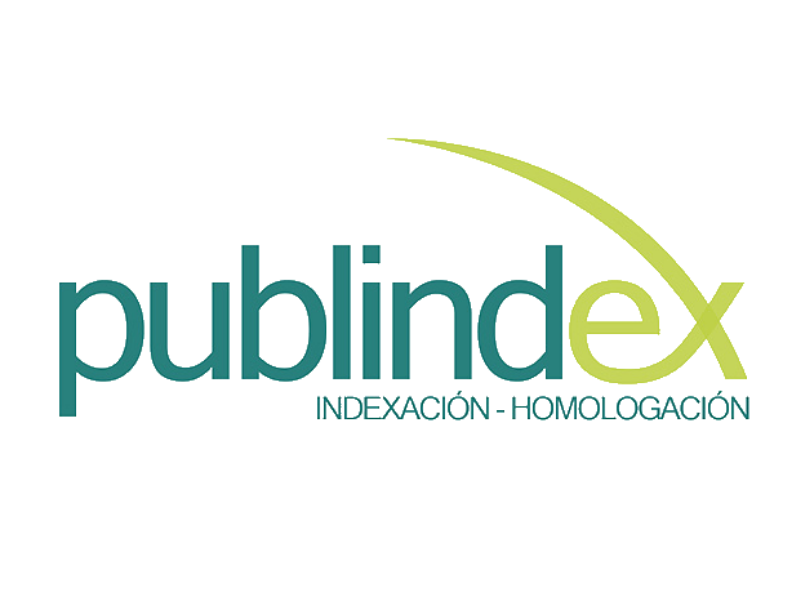Enfermedad renal poliquística: serie de casos
Polycystic Kidney Disease: A Case Series
Cómo citar
Descargar cita
Esta obra está bajo una licencia internacional Creative Commons Atribución-NoComercial-CompartirIgual 4.0.
Mostrar biografía de los autores
Introducción: la enfermedad poliquística es el trastorno renal hereditario más frecuente. Tiene una prevalencia a nivel mundial de 1 en 10.000. Tanto el fenotipo como el genotipo son heterogéneos con patrón de herencia mendeliano, lo cual permite clasificarla en autosómica dominante y recesiva. Reporte de casos: se informan 5 casos el primero con una nueva variante del gen ITGA8 no descrita antes. 3 con el gen PKD1 de la dominante y 1 caso con el gen PKHD1 para la recesiva. Discusión y conclusión: nuestros datos ilustran los hallazgos ecográficos, moleculares y de laboratorios que son de utilidad para dilucidar el espectro heterogéneo de la enfermedad.
Visitas del artículo 291 | Visitas PDF 72
Descargas
- Montaña A, Patiño N, Larrate C, Zambrano FA, Martínez J, Lozano H, et al. Actualización en enfermedad renal poliquística. Rev Fac Med. 2018;66(1):107–16. http://dx.doi.org/10.15446/revfacmed.v66n1.60760
- Bergmann C, Guay-Woodford LM, Harris PC, Horie S, Peters DJM, Torres VE. Polycystic kidney disease. Nat Rev Dis Primers. 2018;4(1):50. http://dx.doi.org/10.1038/s41572-018-0047-y
- Colbert GB, Elrggal ME, Gaur L, Lerma E V. Update and review of adult polycystic kidney disease. Dis Mon. 2020;66(5):100887. http://dx.doi.org/10.1016/j.disamonth.2019.100887
- Menezes LF, Germino GG. The pathobiology of polycystic kidney disease from a metabolic viewpoint. Nat Rev Nephrol. 2019;15(12):735–49. http://dx.doi.org/10.1038/s41581-019-0183-y
- Luo L, Roy S, Li L, Ma M. Polycystic kidney disease: novel insights into polycystin function. Trends Mol Med. 2023;29(4):268–81. http://dx.doi.org/10.1016/j.molmed.2023.01.005
- Foo JN, Xia Y. Polycystic kidney disease: new knowledge and future promises. Curr Opin Genet Dev. 2019;56:69–75. http://dx.doi.org/10.1016/j.gde.2019.06.007
- Wicher D, Obrycki Ł, Jankowska I. Autosomal Recessive Polycystic Kidney Disease-The Clinical Aspects and Diagnostic Challenges. J Pediatr Genet. 2021;10(1):001–8. http://dx.doi.org/10.1055/s-0040-1714701
- Cordido A, Vizoso‐gonzalez M, Garcia‐gonzalez MA. Molecular Pathophysiology of Autosomal Recessive Polycystic Kidney Disease. Int J Mol Sci. 2021;22(12):6523. http://dx.doi.org/10.3390/ijms22126523
- Roediger R, Dieterich D, Chanumolu P, Deshpande P. Polycystic Kidney/Liver Disease. Clin Liver Dis. 2022;26(2):229–43. http://dx.doi.org/10.1016/j.cld.2022.01.009
- Müller RU, Messchendorp AL, Birn H, Capasso G, Cornec-Le Gall E, Devuyst O, et al. An update on the use of tolvaptan for autosomal dominant polycystic kidney disease: consensus statement on behalf of the ERA Working Group on Inherited Kidney Disorders, the European Rare Kidney Disease Reference Network and Polycystic Kidney Disease International. Nephrol Dial Transplant. 2022;37(5):825–39. http://dx.doi.org/10.1093/ndt/gfab312
- Gómez-Conde S, Dunand O, Hummel A, Morinière V, Gauthier M, Mesnard L, et al. Bi-allelic pathogenic variants in ITGA8 cause slowly progressive renal disease of unknown etiology. Clin Genet. 2023;103(1):114–118. http://dx.doi.org/10.1111/cge.14229
- Seeman T, Blažík R, Fencl F, Bláhová K, Obeidová L, et al. Ambulatory blood pressure and hypertension control in children with autosomal recessive polycystic kidney disease: clinical experience from two central European tertiary centres. J Hypertens. 2022;40(3):425–31. http://dx.doi.org/10.1097/HJH.0000000000002973
- Irazabal M V., Torres VE. Total Kidney Volume and Autosomal Dominant Polycystic Kidney Disease: A Long-Standing Relationship. Am J Nephrol. 2018;48(1):65–6. http://dx.doi.org/10.1159/000491026
- Park H, Paek JH, Kim Y, Park WY, Han S, Jin K. Clinical characteristics and risk factors for kidney failure in patients with autosomal dominant polycystic kidney disease: A retrospective study. Medicine. 2022;101(47):E31838. http://dx.doi.org/10.1097/MD.0000000000031838
- Tian W, Chen N, Ye Y, Ma C, Qin C, Niu Y, et al. A genotype-first analysis in a cohort of Mullerian anomaly. J Hum Genet. 2022;67(6):347–352. http://dx.doi.org/10.1038/s10038-021-00996-w
- Abdul Majeed N, Font-Montgomery E, Lukose L, Bryant J, Veppumthara P, Choyke PL, et al. Prospective Evaluation of Kidney and Liver disease in Autosomal Recessive Polycystic Kidney Disease-Congenital Hepatic Fibrosis. Mol Genet Metab. 2020;131(1–2):267-276. http://dx.doi.org/10.1016/j.ymgme.2020.08.006












